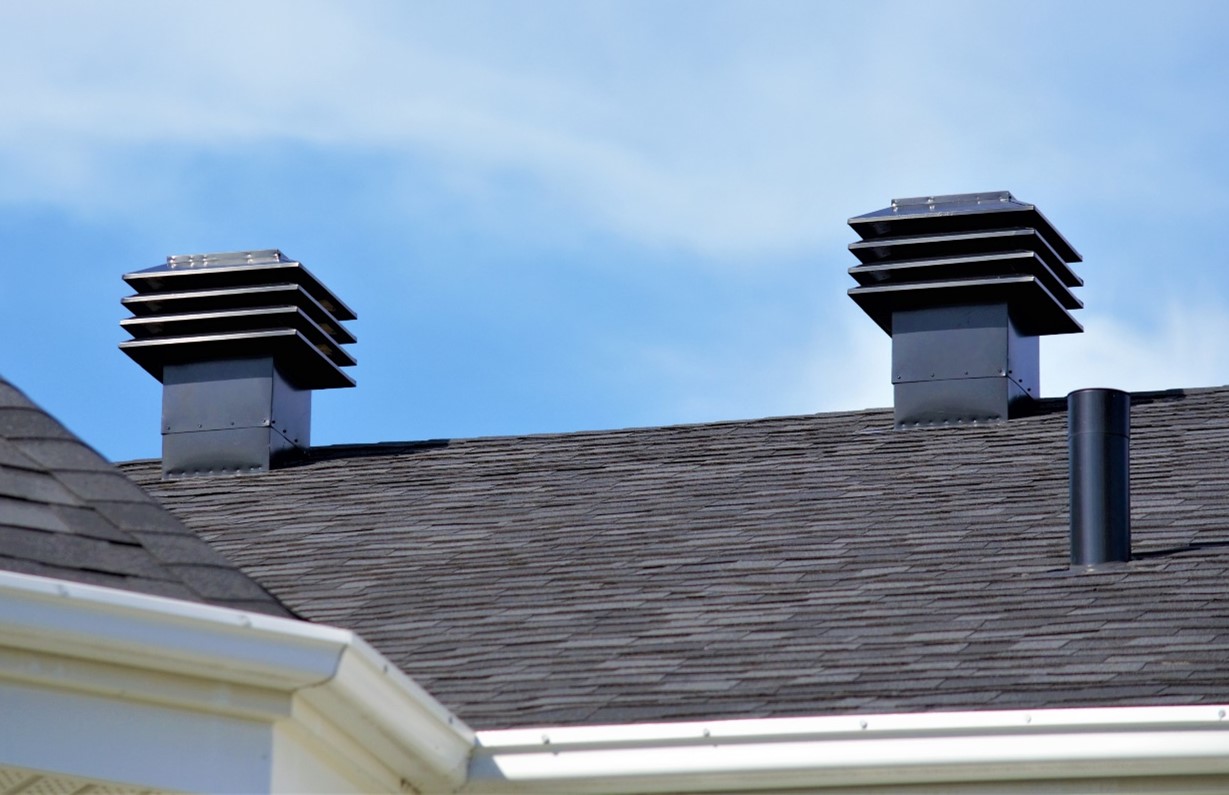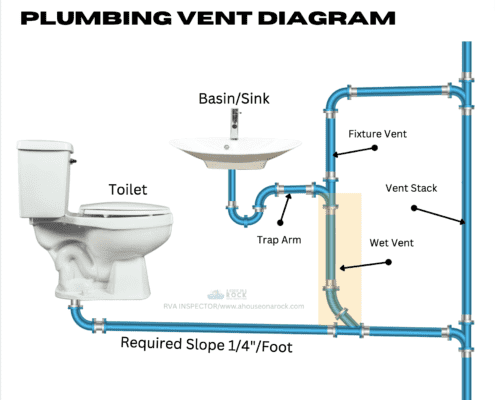The Role of Correct Ventilation in Ensuring Plumbing Systems
The Role of Correct Ventilation in Ensuring Plumbing Systems
Blog Article
Just about everyone is bound to have their own individual concepts in relation to What Is A Plumbing Vent & How Do They Work?.

Appropriate air flow in pipes systems is typically overlooked, yet it is critical for maintaining the capability and security of your home's pipes. Ventilation assists control air pressure, prevent the buildup of harmful gases, and make certain the reliable elimination of waste. In this guide, we will certainly explore the importance of proper pipes ventilation, just how it works, and the advantages it brings to your plumbing system.
Understanding Ventilation in Pipes
Air flow in pipes refers to the network of pipes that allow air to flow with the drainage system. These vents offer several purposes, including regulating atmospheric pressure within the pipes, avoiding sewage system gases from getting in the home, and aiding in the smooth circulation of wastewater.
How Ventilation Works in Plumbing Solutions
Atmospheric Pressure Law
Proper ventilation preserves well balanced air pressure within the plumbing system. When water moves through pipes, it displaces air. Without adequate air flow, this variation can develop negative stress, resulting in reduce drains or siphoning of water from catches, which can create undesirable smells to permeate right into the home.
Stopping Drain Gas Build-up
One of one of the most important features of plumbing vents is to stop drain gases, such as methane and hydrogen sulfide, from gathering within the home. These gases can pose significant wellness risks and are very flammable. Vent pipes enable these gases to escape securely outside.
Aiding in Waste Removal
Ventilation aids in the effective elimination of wastewater by avoiding airlocks in the water drainage system. When air can flow easily with the vents, it allows water and waste to flow smoothly via the pipelines, lowering the threat of clogs and backups.
Types of Plumbing Vents
Main Heap Vent
The major stack vent, also known as the vent stack, is the key air vent in a plumbing system. It prolongs from the primary drain line up through the roofing, enabling gases to escape and fresh air to enter the system.
Branch Vent
Branch vents link to the main stack vent and serve specific components, such as sinks, bathrooms, and showers. These vents ensure that each fixture has sufficient ventilation to function appropriately.
Air Admittance Valve (AAV).
An Air Admittance Valve (AAV) is a one-way shutoff that allows air to go into the plumbing system without the requirement for a traditional vent pipeline prolonging through the roof. AAVs are frequently made use of in renovations or areas where mounting a basic vent is impractical.
Indications of Poor Ventilation in Pipes.
Slow Draining Fixtures.
If your sinks, tubs, or toilets are draining pipes gradually, maybe a sign of poor ventilation. Poor air circulation can develop a vacuum result, making it difficult for water to drain pipes appropriately.
Gurgling Seems.
Gurgling noises originating from drains pipes are typically an outcome of air being sucked through water traps as a result of unfavorable stress in the pipelines. This is a clear sign of not enough ventilation.
Undesirable Odors.
Sewer odors inside your home are a warning that your plumbing system is not appropriately ventilated. This can indicate that drain gases are not being properly vented outside, leading to potentially dangerous conditions.
Common Air Flow Blunders.
Insufficient Vent Sizing.
Utilizing small vent pipelines can bring about inadequate air flow and stress imbalances in the system. It's necessary to make use of vents that satisfy the specific requirements of your plumbing system.
Improper Vent Placement.
Placing vents also far from the components they offer can decrease their performance. Correct positioning makes sure that air can flow openly and effectively through the system.
Disregarding Code Needs.
Building codes provide certain standards for plumbing air flow. Overlooking these codes can lead to a system that stops working to operate correctly and may cause costly repair work or health hazards.
Advantages of Appropriate Air Flow.
Improved System Effectiveness.
Appropriately ventilated pipes systems operate more efficiently, with fewer obstructions, faster draining, and much less pressure on the pipes. This efficiency extends the life expectancy of the pipes system.
Improved Air High Quality.
By protecting against sewage system gases from entering your home, proper ventilation adds to better interior air quality, making your living setting healthier and more comfortable.
Preventing Water Damages.
Sufficient air flow assists protect against water from being siphoned out of traps, which can lead to sewage system gases getting in the home and triggering water damage in time.
Actions to Guarantee Proper Ventilation.
Consulting Plumbing Codes.
Always seek advice from regional pipes codes when designing or modifying your plumbing system. These codes give the essential guidelines for correct airing vent and guarantee your system meets security criteria.
Normal Examination and Upkeep.
Routine assessments can assist identify potential air flow problems prior to they come to be major problems. Maintenance tasks, such as cleaning air vent pipes and checking for obstructions, are important for keeping the system in good working order.
Specialist Installation.
For new installments or significant adjustments, it's smart to work with a professional plumbing technician. They have the know-how to make certain the air flow system is appropriately developed and mounted according to code.
Conclusion.
Appropriate ventilation is an important element of any type of plumbing system, ensuring that it operates successfully and securely. By recognizing the value of air flow, acknowledging the indications of bad air flow, and taking steps to maintain your system, you can prevent costly problems and protect your home's air high quality.
What is a Plumbing Vent and it's used for?All plumbing systems in residential and commercials construction have a plumbing vent. It doesn’t just vent unwanted odors from the drainage system to the outside; it actually serves an important purpose by supplying air to the system.
The plumbing drainage system is actually called a drainage, waste and vent (DWV) system. When water flows down the piping, an air supply (vent) is needed to allow the water to flow. Think of the vertical pipe as a drinking straw. If you plug the top end of a straw, liquid won’t drain from it.
The DWV system in your building consists of a series of pipes connected to each fixture; they extend above each fixture, and the system terminates at an open pipe that extends through the roof. This piping allows air into the system and prevents unbalanced pressures in the piping.
?The vent also prevents the system from drawing water out of a trap at the fixture with the characteristic “glug-glug-glug” as the drain gasps for air. Plumbing traps should drain smoothly and never “glug” or gasp for air.
If you have a drain that empties slowly or gurgles as it drains, this may indicate a venting problem. If you flush a toilet and the sink gurgles, there’s definitely a vent problem. It is good idea to have a Plumber check this.
https://www.ameliashomeinspection.com/blog/what-is-a-plumbing-vent-and-its-used-for

We had been shown that editorial on What Is A Plumbing Vent & How Do They Work? from a buddy on a different web page. Are you aware of another individual who is serious about the topic? Please feel free to promote it. I praise you for your time. Come back soon.
Call Report this page